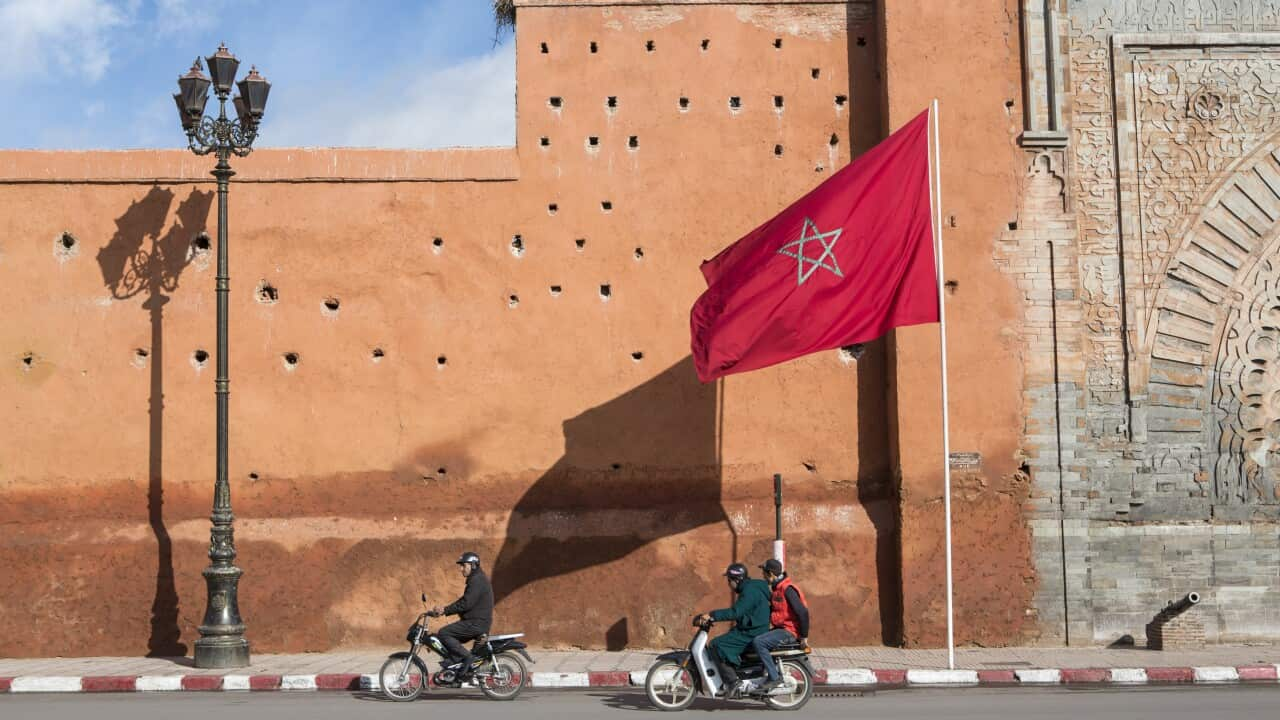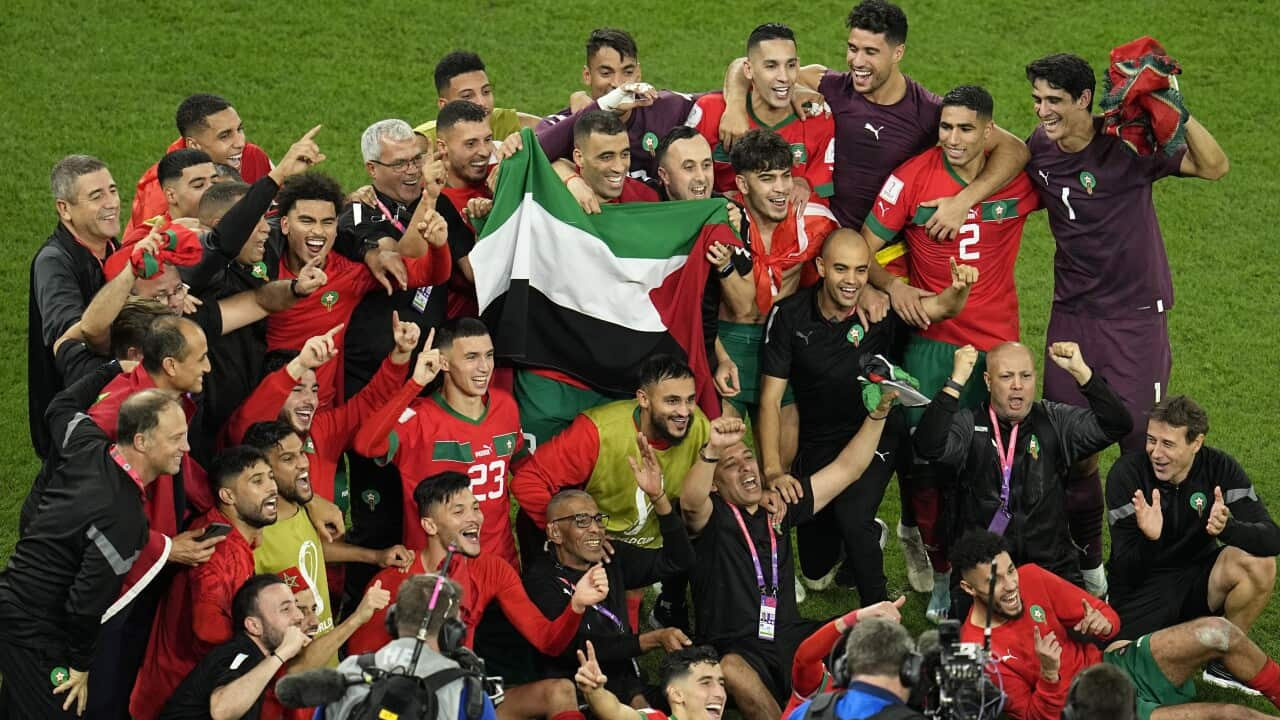Key points
- The Moroccan football team made history for Africa at the World Cup.
- Its African and Arab people are just part of the identity of Morocco.
- The country is home to the oldest learning institution in the world.
Morocco's World Cup run captured the hearts of much of Africa and the Arab world with the Atlas Lions punching above their weight in Qatar.
The team's at the weekend followed successes over football heavyweights Spain and Belgium, with 2018 champions France now standing in their way of a spot in the World Cup final.
The success of the north African side has been a surprise - when Cameroon great Samuel Eto'o shared his prediction that Morocco would make a run to the final it was met with laughter online.
Eto'o's prediction that Cameroon would be the other finalists hasn't happened, with his side bowing out in the group stage.
Morocco fell short of the final, losing 2-0 to France on Thursday morning and will face Croatia in the third-place playoff.
Here's 10 things you might not know about the team and the country.
1. 'Giant killers'
The Moroccan team has beaten the odds time and time again so far at this World Cup to go further than any other African team ever in the competition.

Fans of Morocco celebrate the team's quarter-final win over Portugal. Source: Getty / NurPhoto
The players, superbly marshalled by their French-born coach Walid Regragui, had other ideas.
A 0-0 draw with Croatia in their opening match on 23 November was followed by a shock 2-0 win over Belgium five days later. Morocco won their final group game 2-1 against Canada to finish top of their group on seven points, two points ahead of Croatia.
Belgium, semi-finalists in 2018, went home.
Morocco next took on 2010 World Cup winners Spain and won penalties after the match finished 0-0 after extra time, the winning kick delivered by Spanish-born Achraf Hakimi. The Atlas Lions were now in new territory - their previous best performance was reaching the round of 16 at the 1986 World Cup in Mexico.
Morocco's shock 1-0 win over Portugal in Sunday's quarter-final has appeared to end veteran superstar Cristiano Ronaldo's chances of winning a World Cup. He'll be 41 by the time the 2026 tournament rolls around.

Morocco's Achraf Hakimi celebrates scoring the winning penalty against Spain. Source: Getty / Alexander Hassenstein
2. Mum’s the word
The support of loved ones may have been part of the Moroccan team’s recipe for success at the World Cup.
It’s been reported that all Moroccan squad members were able to choose family members to be given all-inclusive travel to Qatar for the tournament.
Photos and video of Achraf Hakimi rushing to celebrate with his mother in the stands after securing his team’s win against Belgium went viral.
Upon taking control of the team less than three months before the World Cup started, the team’s coach Regragui said: “Our success is not possible without our parents.”
3. Arab or African?
The two main people groups in Morocco are the Berbers (the indigenous people of North-west Africa) and Arabs (who conquered Morocco in the 8th century and spread Islam.)
The issue of whether Morocco is an African country or an Arab country has long been debated as the country is situated in Africa but culturally has many connections to the Middle East.
While Arabic and Berber are the two official languages, French is also widely spoken.
At different times the country has been ruled by Romans, Arabs, French and Spanish, which have all contributed to the diverse culture of the country including its food, clothing and architecture.
While members of the team have flown the Palestinian flag as part of their victory celebrations, their success has also had them labelled the "pride of Africa".

Supporters in the capital Rabat celebrate Morocco's World Cup quarter-final win over Portugal. Source: Getty / Fadel Senna/AFP
4. Why are Morocco called the Atlas Lions?
Fans of the team can sometimes be seen wearing t-shirts featuring the team’s mascot, a lion.
The Atlas lion, also known as the Barbary lion, Berber lion or North African lion, which became extinct in and around Morocco in the 1960s, was believed to be a distinct species.
Genetic analysis has since found that it was actually an Asiatic lion.

The Atlas Lions are named for the lions that once roamed the northern part of Arfica. Source: AAP / Mohamed Messara/EPA
5. The King that danced in the streets
Morocco’s official name is actually the Kingdom of Morocco and like the United Kingdom, it is a constitutional monarchy and has a royal family.
King Mohammed VI took the throne in 1999 after the death of his father King Hassan II.
While the ruling system was challenged during the ‘Arab Spring,’ critics have said the 2011 referendum, which saw the establishment of a parliamentary monarchy, has done little to water down the ruling elite’s power.
6. Let it snow
While most who plan a trip to Morocco do so envisioning wandering through local souks [marketplaces], Saharan desert landscapes, and palm groves, the country also has ski fields.
The tall peaks of the Atlas Mountains are covered in snow throughout parts of the year.
The ski resort of Oukaïmeden is at an altitude of between 2,600 metres and 3,200 metres.
7. The capitals
Many wrongly assume Marrakesh is the capital of Morocco when it is actually Rabat.
Marrakesh did hold the title for about two hundred years though and over the years, others have too.
Rabat has been Morocco's capital city since 1912.
Picturesque Fes, with its minarets and domes, was capital more than once and Meknes, which was originally a military settlement also held the title for a time.

At one stage Fes was the capital of Morocco. Source: Getty / Maremagnum
8. Dishing it up
Morocco's national dish is couscous. Traditionally it refers to a full dish of meat, vegetables and the tiny semolina balls known generally as couscous. The staple is a round bread called khobz.
Meats such as mutton, lamb, goat, chicken and beef may feature in Moroccan dishes, which are often seasoned with spices including cinnamon, ginger and saffron. Seafood is also popular.

A dish of couscous at a restaurant in Marrakesh. Source: Getty / Peter Bischoff
9. World record holder
Morocco is home to the oldest learning institution in the world.
The lists Al-Karaouine as the oldest existing, and continually operating educational institution in the world.
Now a university, it was established in Fes in 859 and according to , education is still delivered in traditional methods with students sitting in a semi-circle, called halqa around the instructor.

Al-Karaouine in Fes is the oldest learning institution in the world. Credit: DEA / 2 P/De Agostini via Getty Images
10. On the borderline
Morocco's footballing success so far has put the country on more people's radars and could put it on the map for increased tourism in coming years.
But there is something interesting about the Moroccan map - to its north is one of the world’s shortest international borders with another country.
An eight-kilometre section of the Moroccan border is shared with the Spanish autonomous city of Ceuta.
This Spanish enclave and another (Melilla) on the same northern shore of Morocco’s Mediterranean coast are the only land borders between Africa and the European Union.


